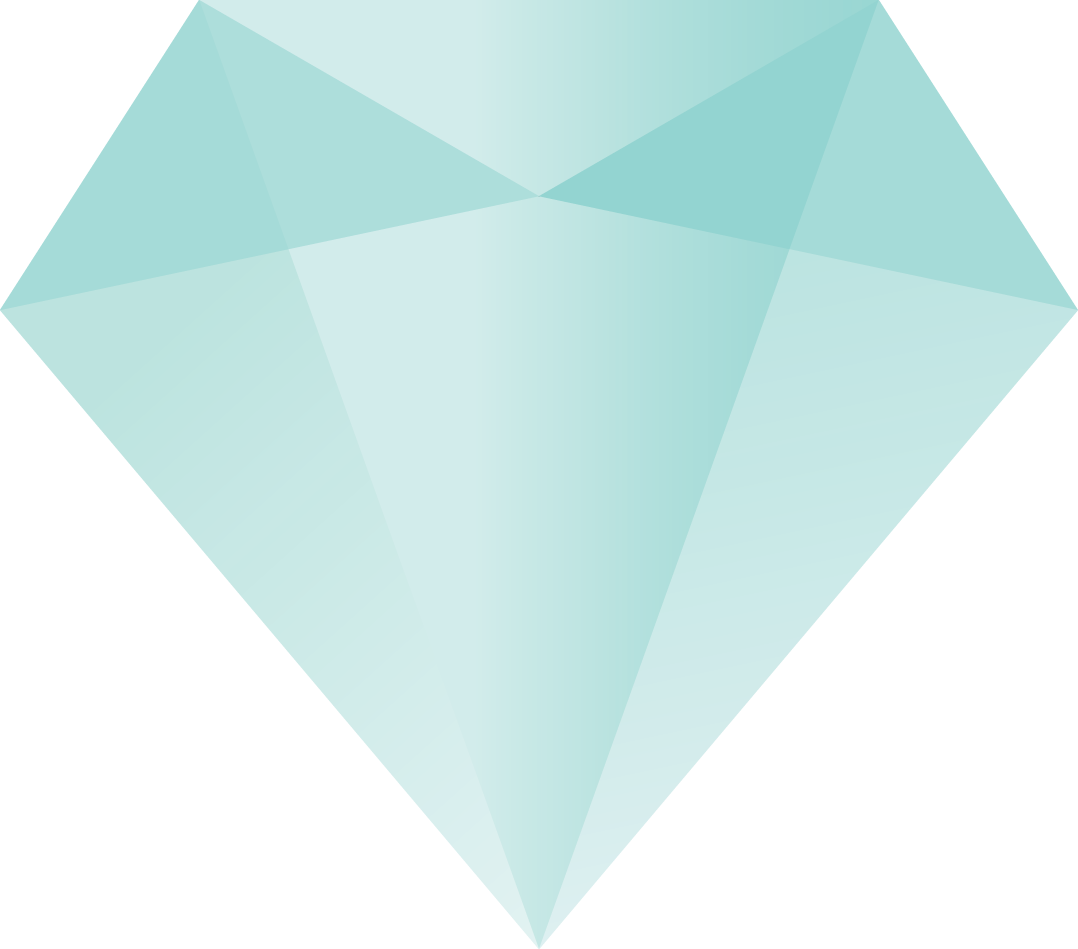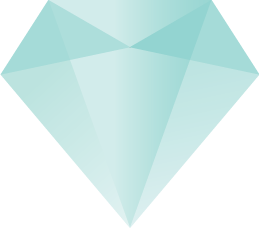Jewelry Styles
(and how they work)
Body jewelry is full of words and terms that may be unfamiliar or confusing. We put together this guide to hopefully help you better understand some of the common terminology and feel more informed when shopping for jewelry or discussing jewelry options with your piercer.
And don’t worry, if you’re ever confused or unsure we’re happy to help!
Attachment Styles
-

Threadless
Threadless Jewelry is a style of attachment for the end pieces and shaft of body jewelry. Threadless jewelry utilizes the pressure of a bend in a pin to hold the end into the shaft. This style of jewelry is great because it allows you to swap ends on various gauge posts without issue and can have less of a learning curve than threaded jewelry. Some larger pieces put too much pressure from their weight on the pin so for pieces like that threads are typically a better idea. In order to remove threadless jewelry you simply grab both sides and pull it apart. While threadless jewelry is generally secure, there is always a small possibility of the top coming loose with excessive force or movement. As such, it's essential to handle threadless jewelry with care and ensure that it fits snugly to minimize the risk of accidental removal. How tight the pieces fit together can be adjusted by making the bend in the pin larger or smaller.
-

Internally Threaded
Internally Threaded Jewelry is another style of attachment for the end pieces and shaft of body jewelry. This one utilizes threads on the end or bead that twist into the internally tapped threading of the shaft piece. This design keeps the threads from coming in contact with the piercing channel itself. We like this style for anything inside of the mouth like the tongue, or smiley piercings as well as genitals and navel piercings. It’s also good for larger ends that have too much weight for a threadless pin. Threading can be limiting because different gauges of jewelry have different threading. 18g and 16g jewelry shares one size of threads while 14g and 12g jewelry share another size. Gauges above 12g each have their own threading size. This can be frustrating if you want to swap ends amongst piercings that have different gauge sizes. Threaded jewelry can also slowly unthread itself but this is less common with high quality jewelry which often will utilize some sort of “thread lock” technology - regardless it’s still a good practice to check all threaded components to make sure they haven’t come loose.
-

Externally Threaded
External threads means that the threading portion is on the outside of the shaft. This style of threading in undesirable because the sharp threads on the shaft going through the piercing channel can be irritating and damaging. There are no quality manufacturers making externally threaded jewelry so it is a very simple way to rule out jewelry as quality. Like internally threaded jewelry, externally threaded jewelry tends to come loose. Externally threaded jewelry tends to loose beads and ends more often as there’s no extra security features at place. They are also more likely to become cross threaded. We do not carry this style of jewelry or components that are compatible with it.
Measurements
-

Gauge
Gauge, denoted with a “g” after a number, refers to the thickness of the actual barbell or post that goes through the piercing. Piercers will choose to pierce certain areas at different gauges depending on a varsity of factors to benefit healing and long term viability of the piercing. Gauge measurements go from a larger number to a smaller number meaning that 18g is thinner than 4g. In order to wear smaller gauge jewelry in a piercing that was pierced larger you’d simple change to the thinner jewelry. In order to wear larger gauge jewelry in a piercing that was done at a thinner gauge you would need to stretch the piercing. Gauge measurements are commonly used when referring to wire, needles and other manufacturing components so you may see the term show up in other fields.
-

Wearable Length
This refers to the length measurement of a barbell between the two ends. This is the measurement for the part of the jewelry that actually goes through the piercing. The length that will work your piercing depends on a variety of factors such as your individual anatomy, the angle and age of the piercing and any expected swelling. It is best to have jewelry sized by a professional piercer in person so that they can assess your piercing in person.
-

Internal Diameter
The inner diameter of a ring is essentially the ring equivalent of wearable length. The diameter that will work for you is influenced by the same sorts of factors as length but just because you wear a certain length that does not mean that same diameter ring will work for your piercing. Because of the curvature of the ring the measurements are different so if you’re currently wearing a straight piece of jewelry in your piercing and want to change to a ring you’ll need a professional piercer to help you with sizing the correct ring for your piercing.
Ends
-

An "end" in the context of body jewelry refers to the decorative piece or pieces that attach to a barbell or post. These ends come in a wide range of styles, from ornate and decorative designs to more understated beads or disks. Essentially, they constitute the visually appealing and decorative aspect of your jewelry, adding that unique touch to your look. Our inventory features an extensive selection of these end pieces, all of which are available for viewing on our webstore.
Barbells
-

Labret Post
A Labret Post is essentially a straight barbell shaft that features a disk on one end, while the other end remains open to accommodate decorative ends or beads. In our collection, we offer both threadless labrets with a permanently attached disk, and threaded labrets that come with separate threaded barbell shafts and disks. If you prefer, we can also order threaded labrets that come with fixed disks. These versatile pieces are popularly worn in various ear piercings, lip piercings, and nostril piercings. They're often referred to as "flat backs" due to the flat disk that rests against the skin.
-

Straight Barbell
A straight barbell is exactly what its name suggests: a barbell with a straight design. This type of jewelry can be worn with a disk on one end, creating what's known as a labret. Alternatively, you can opt for two beads or decorative ends on both ends of the barbell. This setup is commonly used in piercings such as nipples, bridge, and some genital piercings.
-

Surface Barbell
Surface barbells are specifically designed for surface piercings and can also be incorporated into creative ear projects. These unique barbells feature a straight shaft with 90-degree bends on both sides. This distinctive design is what sets them apart and makes them suitable for surface piercings.
Curved Barbells
-

Curved Barbell
Curved barbells are a type of body jewelry that, as the name implies, features a gentle curve along their length. The versatility of curved barbells comes from their ability to be paired with beads, disks, or decorative ends, depending on where they're placed. They find common use in a variety of piercings, including rook, eyebrow, navel, and various genital piercings.
-

J-Curve
A J-curve is aptly named for its distinctive shape – resembling the letter "J". This type of curved barbell features a pronounced curve that resembles the J shape. J-Curves are specifically utilized in rook piercings. People opt for this style either for its aesthetic appeal or because their individual rook anatomy is better suited for this type of barbell.
-

Navel Curve
Navel curves are stylish and decorative jewelry pieces that come with a distinct design. One end of the curve is fixed and faces forward, usually featuring an attractive decoration. The other end is open, allowing for the attachment of various decorative ends or beads. While navel curves are most commonly worn in navel piercings, they can also be ordered in different sizes to be creatively applied in other piercings that typically use curved barbells such as rooks and vertical hood piercings.
Rings
-

Captive Bead Ring
This classic ring design has a bead that pops in and out of the ring. These are great because they’re lower cost and keep any kind of seam or textured portion from rotating in to the piercing while it’s healing. They are available with a gem setting instead of a plain bead. A fixed bead ring is also available where the bead is soldered onto one of the sides of the ring so it won’t get lost by popping out. Also referred to as CBRs, for short, these rings make a great option for anywhere you’d wear a ring such as fresh daith and septum piercings or in healed ear piercings, lips and nostrils. They also have applications in a variety of genital piercings.
-

Circular Barbell
Colloquially referred to as a horseshoe, you’ll be familiar with these in septum piercings but they can be worn in other places where you’d wear a ring. They’re definitely one of the trickiest styles of jewelry to thread beads onto.
-

Clicker Ring
These rings are a convenient and stylish option in the world of body jewelry. These rings feature a hinged design that allows them to easily snap open and closed. Clicker rings come in various designs – they can be simple and plain, or they can be adorned with decorative elements that add a touch of personal style. The primary advantage of clicker rings lies in their user-friendly mechanism, which makes them a popular choice for individuals who enjoy switching up their jewelry regularly.
-

Seam Ring
Seam Rings are an economical choice in the realm of body jewelry. These rings require a torquing motion to bend them open and closed. While they might be a bit trickier to manipulate without potentially damaging the ring, they offer exceptional security once properly in place. These rings come in a variety of designs. You can opt for a simple, plain ring or choose one with additional decorative elements to suit your style.
Accesories
-

Charms
Charms are a fun way to add some movement to your piercings. They can be hung off of studs or rings and you can even stack multiple to add a unique look. Charms offer a way to change up your look without having to add additional piercings.
-

Chains
Chains allow you to connect two piercings to each other or can be used similarly to a ring by wrapping around the front and back of the piercing. They are versatile so they can be used in placements where a ring might not work well or be comfortable. They add movement and can direct the eye in fun ways. Some ends will have fixed chains which are sometimes referred to as lassos.

